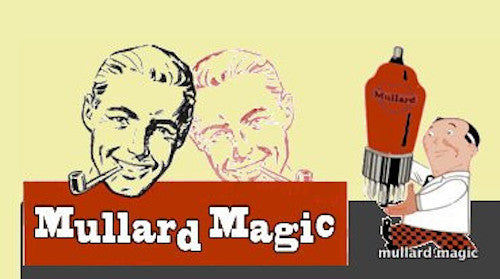
AN INTRODUCTION TO CATHODE RAY TUBE (CRT) MANUFACTURE
Share
Well, a CRT is a thermionic electron tube so I thought we would follow our popular blog series on how valves were made with a similar one detailing the manufacturing process for CRT employed by Mullard.
Let's start with the basics, we can list the CRT main component parts as the envelope, the electron gun and the screen.
The envelope, consists of a funnel shaped glass bulb which was either round or rectangular in section and closed at it's widest end with a flat glass faceplate and terminated at the other end by a narrow tubular neck.
The electron gun, produced a narrow beam of high velocity electrons that move toward the screen, the intensity of this beam being proportional to that part of the picture being transmitted. It was made up of an indirectly heated cathode, a grid which modulated the beam with picture information and two high potential anodes which accelerated the electrons towards the screen. Final focussing of the electron beam and it's deflection such that it sweeps the entire screen area was influenced by a focussing magnet and deflection coil combination located coaxially with the tube neck.
The screen, was coated with a fluorescent material which had the property of emitting light when bombarded by high velocity electrons. The amount of light produced depended upon electron velocity (a function of EHT potential) and the rate of electron flow ( a function of grid modulation and cathode emission).
More detail on the sequence of operations of production will be given in successive blog entries but for now, feast your eyes on the following photograph of 'modern' Mullard produced black and white cathode ray tubes - simply spiffing!

